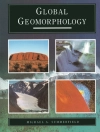Flooding is the number one natural disaster in the United States. While levees can help reduce the risk of flooding, it is important to remember that they do not completely eliminate the risk. Chapter One discusses their downsides, as well as why the Federal Emergency Management Agency (FEMA) and the U.S. Army Corps of Engineers (USACE) require periodic levee inspections and evaluations. Chapter Two focuses on the Mississippi River levee system, which is one of the largest levee systems in the world, in order to better understand the levee-delta interaction and its impact on the loss of vast expanses of coastal land on deltas around the globe. Furthermore, the chapter examines the New Orleans levee system and its performance during Hurricane Katrina, to demonstrate how human-made changes to the Mississippi River delta natural environment amplified the effects of the storm. Chapter Three explores the basic principles of microbial fuel cells (MFCs) following the latest developments and the current state of research related to wastewater treatment in term of COD, nitrates, phosphates, sulphates and micro pollutants removal. The different factors affecting the MFCs performance treatment are also discussed. Chapter Four focuses on boron, an important element affecting bio-synthesis and cell metabolism, yet one that is harmful when it exceeds its critical limit. A model for the analysis of concentration polarization and the degree of rejection of boric acid, borate anions and monovalent ions is proposed. Chapter Five investigates the relationship between coral calcification rate and four different controlling factors: seawater p H, aragonite saturation state (I(c)arag), temperature, and light intensity. Seawater temperature, p H, and I(c)arag are all being directly affected by the increase in atmospheric carbon dioxide occurring. Chapter Six discusses pollution caused by mineral oil. The use of mineral oil in a great variety of products is a basic necessity for an industrialized country; however, the authors say we cannot turn our backs on the responsibilities for the incorrect use of this product, or the damage caused by dumping untreated mineral oil waste products into water bodies. In Chapter Seven, the results of geomorphological research in the Ejina Basin (Inner Mongolia) are presented with regard to identifying the main landforms and the contemporary geologic processes. Chapter Eight focuses on the study of geomorphology and landscape evolution in Namibia, southwestern Africa. The relationship between geomorphology and climate in Namibia reveals the degree and extent to which its landscapes are determined by changing environmental conditions. Finally, Chapter 9 is an analysis of the current global logging activities. The authors explore the major drivers of logging and the logging processes which range from large-scale commercial timber plantations to individual harvesting. The chapter also gives a review of logging operations at a global scale and its underlying effects on the environment and the economy.
Justin A Daniels
Advances in Environmental Research. Volume 56 [PDF ebook]
Advances in Environmental Research. Volume 56 [PDF ebook]
Dieses Ebook kaufen – und ein weitere GRATIS erhalten!
Format PDF ● Seiten 275 ● ISBN 9781536118902 ● Herausgeber Justin A Daniels ● Verlag Nova Science Publishers ● Erscheinungsjahr 2017 ● herunterladbar 3 mal ● Währung EUR ● ID 7228201 ● Kopierschutz Adobe DRM
erfordert DRM-fähige Lesetechnologie












